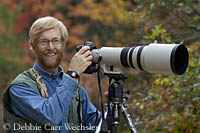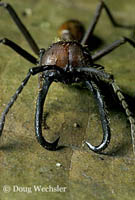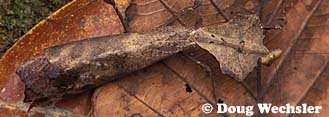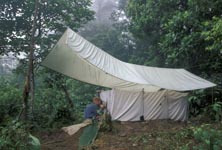
ABOUT DOUG

I started my training to write books on nature at the age of five. That's when I first became interested in birds. Don't ask me how that happened. I can't remember. Sometime, soon after that, I started collecting butterflies and beetles. Soon I also had snakes and lizards as pets.
As a kid, I knew all of the birds, snakes, frogs, and salamanders of the neighborhood. I spent much of my time in the woods and fields near our house. I also got the idea, probably from watching Wild Kingdom on TV, that when I grew up, I would catch animals in Africa for a living. That actually became partly true. I did spend a month in the country of Cameroon catching birds to photograph them. I will get back to that.

When I went to college there was no doubt what my major would be. I studied biology. Fortunately, one of my professors, Edwin O. Willis, did research on birds in tropical forests. He took five of us to Panama for a month to help wrap up his research on an island in the Panama Canal. We followed army ants and kept notes on all of the birds that followed the ants. Why did they follow ants you might ask? Most people guess to eat them. Actually, the birds eat crickets, cockroaches, and other little creature that are trying to escape from the ants. After college I spent another 6 months working with Dr. Willis in the Brazilian Amazon.
From Brazil, I went to Seattle. That is really where my writing career began. I spent a couple of years working with Seattle Audubon Society working to save habitat. As part of my effort I wrote articles for the Seattle Audubon newsletter to explain the conservation problems and to get help in solving them. That gave me confidence to write for some other local publications. Later I had articles published in magazines such as International Wildlife, Owl, and Ranger Rick.
Meanwhile, I had a few other short-term jobs as a park ranger-naturalist, a wildlife biologist, and doing research in Costa Rica on hummingbirds and flycatchers. While in Costa Rica, I was taking a lot of photographs. By my third season there, I decided to become a nature photographer and writer. As a full-time job, that lasted three years until I landed the job I have now.

My first book was inspired by many of the insect photos I took in Costa Rica. While working out of a house deep in the jungle, I would bring back the strangest insect I found each day and call it the weird bug of the day. Ten years later many of those insects ended up in Bizarre Bugs.
For 28 years I worked atthe Academy of Natural Sciences, a large natural history museum in Philadelphia. I ran the biggest collection of bird photographs in the world. You can see 100,000 of those photos on the VIREO web site. As part of my job, I participated and led expeditions to the tropics to photograph birds. 
I have photographed birds in many tropical forests around the world. Rain forest birds can be very difficult to see, let alone photograph. At times I would catch them in mist nets and put them in a special tent to photograph them. I sat outside the tent and poked my camera through a hole. This way I was able to get good photos of hundreds of species of tropical birds. With better digital cameras now, I no longer use the tent and, instead, carry long lenses into the field See Doug's bird photos
Along with my wife Debbie, I have spent the past two winters in Ecuador (South America) volunteering for the Jocotoco Conservation Foundation. You can see photos from the reserves where we lived at www.dougwechsler.com/wordpress/
